Product-led growth (PLG) has been used by some of the most successful SaaS companies for years, but it’s only in recent months that the wider community is starting to take notice of it.
Slack and Calendly are just some of the examples of products that have leveraged PLG to grow their user base rapidly and now others are looking for ways to profit from the same approach.
Like in every other trend, the things that work — work only at the beginning. And those who adopt it early on will have the biggest benefit from them. For that reason, it’s very important for all software and subscription companies to be early adopters.
Product-led growth brings you product-qualified leads, which are the best fit for your business — since they’ve already tried your product and know how to take advantage of it. Because of that, your sales department will work with warmer leads who are more interested in your product than sales-qualified or marketing-qualified leads and will be able to close more deals.
In this article, I’ll help you understand how to organize your sales effort in a PLG-led company and how to turn your product and your sales team into a well-oiled machine that generates new highly-engaged customers.
In the following sections, we’ll cover:
- What Product-Led Growth is and why it’s important for your business
- What’s the difference between the product-led, sales-led, and marketing-led approaches
- What are PLG sales and why you should consider using them
- How to do PLG sales
So let’s get started.
What is Product-Led Growth (PLG)?
Product-led Growth isn’t a new concept, but it has become really popular in the last few years because of the rising levels of competition in SaaS.
PLG is the process of using your product as the main acquisition and growth channel.
Tweet this quote
The product-led model is suitable for all SaaS businesses. It helps them to showcase their product first before even discussing the upgrade or premium accounts with their trial users.
In other words, the purpose of Product-Led growth is to enable trial/free users to see the immediate product value and make them develop a habit around using the product so eventually, they end up buying it.
Here are the key aspects of the PLG strategy:
- Your product is the key channel to market to your prospects
- The product should have a viral effect and prompt your users to invite and share
- The user experience should be your biggest focus
- You should capture product usage activity in order to drive personalized onboarding and experiences
- User segmentation and personalized in-app experiences are playing an important role in PLG
- Don’t show paywalls before the customer has seen the value
Why it’s important to use a PLG model
If you’re a SaaS or any other company that has a subscription-driven pricing model, you should definitely consider making PLG your main driver of growth.
There are several reasons why:
- The market is huge and customers are demanding more and more each day: The number of direct/indirect competitors you have is getting bigger every single day — many businesses are struggling with differentiating themselves in the market with their website and product positioning. Giving potential customers an opportunity to try the product before buying it is essential.
- Customer Acquisition Cost (CAC) is increasing: Even if this trend isn’t affecting your business, PLG can help you reduce your CAC since your trial-to-paid conversion rates are going to be better and you will spend less time on manually closing deals (if your product and user experiences are good enough).
- It improves your customer lifetime value (LTV): If you acquire your customers with the help of the PLG model, it means that they saw a value in your product and that they’re going to become long-term users. In other words — they can’t live without your product. Take Slack for example. Slack becomes so embedded in teams, that they have no choice but to start paying for it — changing the vendor and doing the same things over and over again will cost them time, money, and nerves.
As you can see, Product-led growth can bring you a lot of benefits.
Before we actually see how to do PLG sales, let’s see what are the main differences between the product-led, sales-led, and marketing-led approaches.
What are the differences between product-led, sales-led, and marketing-led approaches?
In order to understand how to do product-led sales, we first need to know what are the differences between the various approaches.
Product-led vs Sales-led approach
The sales-led sales approach is mainly focused on cold-emailing, outreach, and cold-calling, while the product-led sales approach is using the product as the main acquisition channel.
In other words, sales teams are qualifying sales leads by different lead scoring aspects (like the team size, industry, title of the lead, and a bunch of other factors), while the product-qualified leads are qualified by different in-app experiences and events.
For example, if your product requires installing some part of the code on the user’s website, the user might be considered as a product qualified lead if they install the code.
So, what are the differences between product-led and sales-led approach?
- The product-led approach shows the value, while sales-led approach tells the value: in other words, product-led sales are leading users towards the meaningful outcome, such as sending the first email campaign to a number of subscribers in MailChimp. On the other hand, sales-led approach explains the benefits of your product — but doesn’t show them.
- Product-led growth is more cost-efficient: the important difference between these two approaches is in its cost, especially because CAC is going up over time. The product-led approach helps you to attain cost-efficiency. For example, since with the PLG model users are onboarding themselves, you’re reducing the sales cycle and time-to-value. Or, you have lower costs to serve and bigger revenue per employee, since you initially don’t need too many employees.
Product-led vs Marketing-led approach
There are a couple of differences between product-led and marketing-led approach, but that doesn’t mean that they can’t coexist with each other. Even more, it means that they should fill the gaps they have.
Let’s look at the differences:
- Product-led and Marketing-led approaches are measuring different KPIs: most marketing-led companies are great at acquisition, but not so good at figuring out their performance in activation and retention. Even more, only 44% of SaaS companies defined user activation as the KPI for their product. Not using activation and retention metrics means that you’re not paying attention to your churn — which is a deadly metric for your company. Because of this, both approaches must co-exist and work smoothly with each other.
- Product-led companies spend less money on marketing: If you’re using only marketing-led approach, you will always need to spend more money to buy attention. If you’re in the scaling phase, you can’t dedicate too much money on marketing activities and ads. In other words, bringing the user inside your product with marketing and onboarding and retaining them with the product-led approach will save you a fortune.
As we can see, all three methods must coexist if we want to grow our companies effectively.
Marketing-led and sales-led approaches are there to bring the people inside our product. But what happens after it, and whether the user will decide to buy or not to buy your product, mostly depends on the product-led approach.
That’s the reason why PLG sales are important for your business.
So, let’s see how to do PLG sales.
How to do PLG sales
The PLG sales cycle begins from the moment when your trial user lands on your product.
That’s the moment when you need to be able to track their moves through your product.
As I already mentioned, PLG sales are based on user experiences and in-app events. So, PLG sales are product-first. Having good UX/UI is mandatory.
The ultimate goal of PLG sales is to motivate your users to use your product, unleash the value as soon as possible, and convert your users to power-users (i.e. users who can’t live without your product — just like Slack did).

Specifically for that reason, you need to unleash the “aha!” moment from the user’s first-run through your product.
What’s the “aha!” moment mostly depends on your product. For example, for Slack, the “aha!” moment is when the users start to chat with each other.
It’s important to separate the “aha!” moment from user activation.
- “aha!” moment is the moment when the users perceive the value of your product/feature.
- user activation is the moment when your users feel the value of your product/feature. It means that your user already experienced the benefits.
In other words, for the user to completely adapt your product, use it and start paying for it, he will need to go through different activation points and “aha!s”.

All of this sounds nice in theory, but how can you do this?
Let’s see it, step-by-step.
1. Set your PLG sales KPIs
Before you even start doing your PLG sales, you will need to set-up your KPIs.
As I already mentioned, the most important KPIs in the PLG approach are:
- the “aha!” moment for product/feature
- the user activation moment for product/feature
- Product-qualified leads (PQL)
There are a couple of ways how to decide what your “aha!” moments and user activation points are.
One of them is common sense. It’s good for early-stage products who don’t have users. But as soon as you get your first users (or if you already have some), you will need to monitor their activities and see what’s the most important thing that diversifies those who end up paying for your product form those who don’t.
For example, the team behind Ghost, an online blogging platform, realized that those who change the theme of the blog are more likely to upgrade to premium accounts.
That’s the reason why Ghost created a checklist with everything that users need to do in order to see the full potential of Ghost.
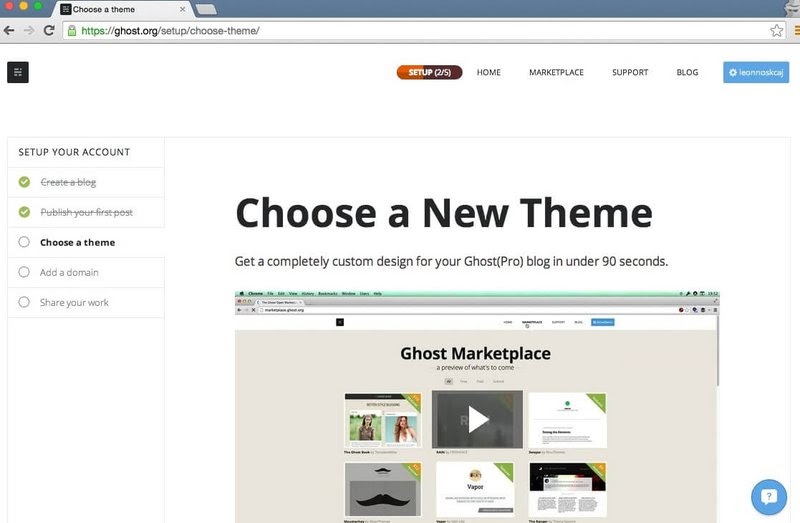
Depending on the complexity of your product, you can have one or 10 different “aha!” moments and user activation points.
It’s important for you to show the biggest value as soon as possible (i.e. making your users engage with your core features at the beginning, and only after that with secondary ones).
So, the user onboarding curve before your trial/free users completely adopt your product and start paying for it might look like this:
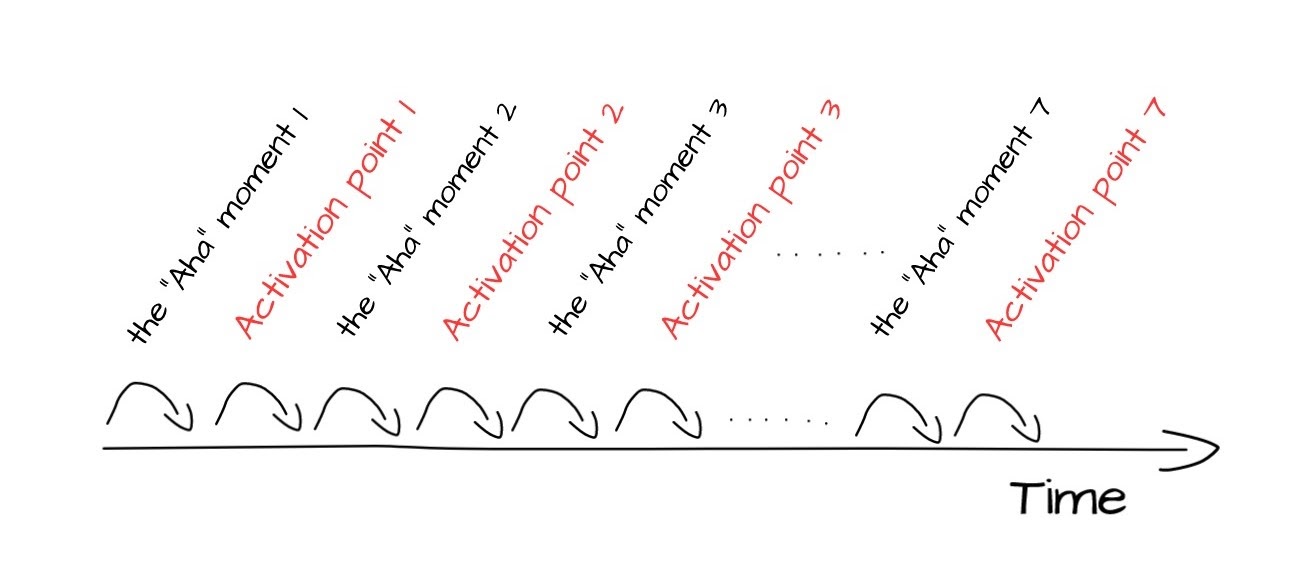
As you can see, for the best results in PLG Sales, you will need to know exactly what your most important KPIs are. If you don’t, you won’t be able to do PLG sales in the right way.
Without defined KPIs, you won’t be able to go to the second step.
Pro tip: for the best activation and adoption rates, I recommend creating personalized and context-driven user onboarding flows. In this way, you will be able to activate more users and do more PLG sales deals.
2. Qualify your users at the trial phase
User qualification at the trial phase is important. It helps you to divide those who might be interested in buying your product from those who won’t be.
Those who are interested in buying your product are called product-qualified leads or PQLs.
The best way to qualify your users is by monitoring their app sessions and the things they’re doing inside your product.
Let’s look at an example with a live chat software and 14-day trial.
In this case, we might have three different groups of people:
- Group A: Trial users who didn’t install your live chat code snippet into their websites a couple of days after they registered.
- Group B: Trial users who installed the code
- Group C: Trial users who installed the code and who are chatting with their website visitors regularly.
We can assume that people in Group B reached the “aha” moment, but weren’t motivated to go any further (or they didn’t have the resources for that).
On the other hand, the people in group C reached both the “aha” moment and the user activation point. Perhaps we can even assume that they adopted the product in their organization and workflows. Those can definitely be considered as PQLs.
So, in this case, you want to do the following:
- Focus your PLG sales efforts on closing deals with the people in Group C
- Motivate the people in Group B to move further (so they can be in Group C) or try to understand why are they not using their live chat (perhaps they don’t have website visitors)
- Remind the people in Group A to install their live chat code so they can see the value. If they don’t, they’re not qualified for PLG sales
As you can see, for an in-depth understanding of your PLG sales cycle, it’s important to qualify your trial users and identify PQLs.
At Userpilot, qualifying our trial users and identifying PQLs helped us improve our MRR by more than 50% in the first months.
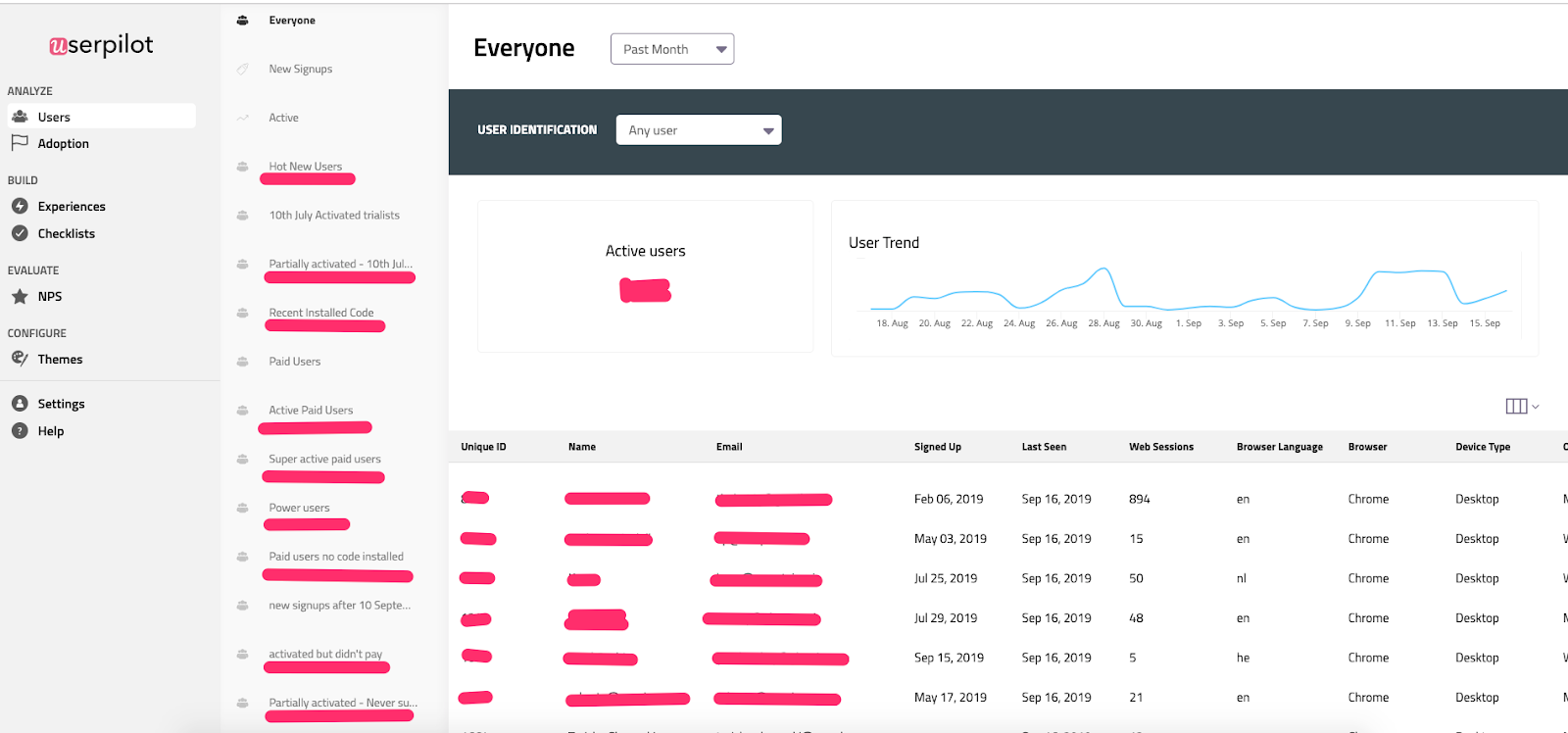
We consider an Activated user someone who installed our JS code in their app and who’s ready to improve their product experiences and user onboarding flows:

We’re also monitoring new users by the number of experiences they create. The more product experiences user created in the trial phase, the more qualified they are (i.e. they can be considered as a PQL).

There are also PQLs that installed the code but didn’t create any product experiences — those require more attention (we consider them a Partially activated user).

For this kind of “partially activate” PQLs, we’re usually sending personalized “demo videos” explaining them some particular features (that are great for their use case) and benefits they can get:
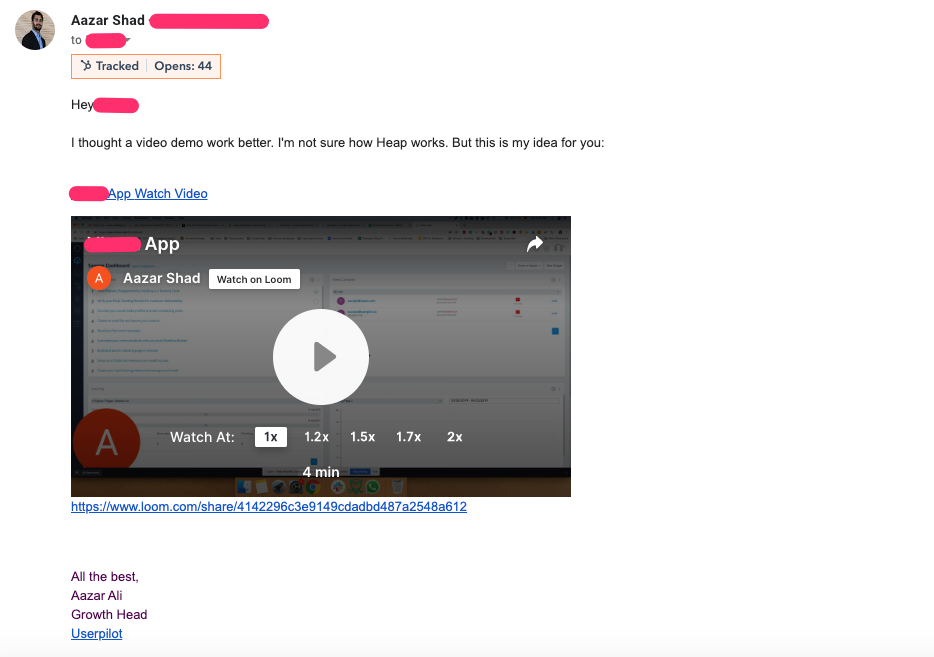
In the end, we have PQLs who are qualified for our product, but who haven’t subscribed or paid yet. We’re also sending them videos and personally contacting them in order to figure out what’s missing and what they need to sign up.

3. Track your users’ in-app events
This one is similar to the step above, but with a little twist.
Sometimes, it’s not just important to track KPIs (“aha!” moments and user activation points), but also the users’ in-app events.
For example, if you have a checklist in your product, did the user complete your checklist fully, partially, or not at all?
It’s clear that the users who fully completed your checklists might be potential customers, and that those who completed them partially require some additional motivation to do that.
The same can be done with other in-app events as well, such as the number of features users are using, or the number of team members they invited.
The more addicted trial users are to your product, the greater the chances will be that they\ will convert to paying customers.
Tweet this quote
Take Slack’s example:
The more team members a Slack user invites, the more who become engaged with the product. The more people in a Slack team has, the faster they will reach the 10,000-message limit where they are exposed to the premium account.
Tracking different users’ in-app events will help you to better qualify people who are interested in buying your product.
Pro Tip: I use exit intent popup slide out if the user hasn’t done any key events in-app to give them a demo:
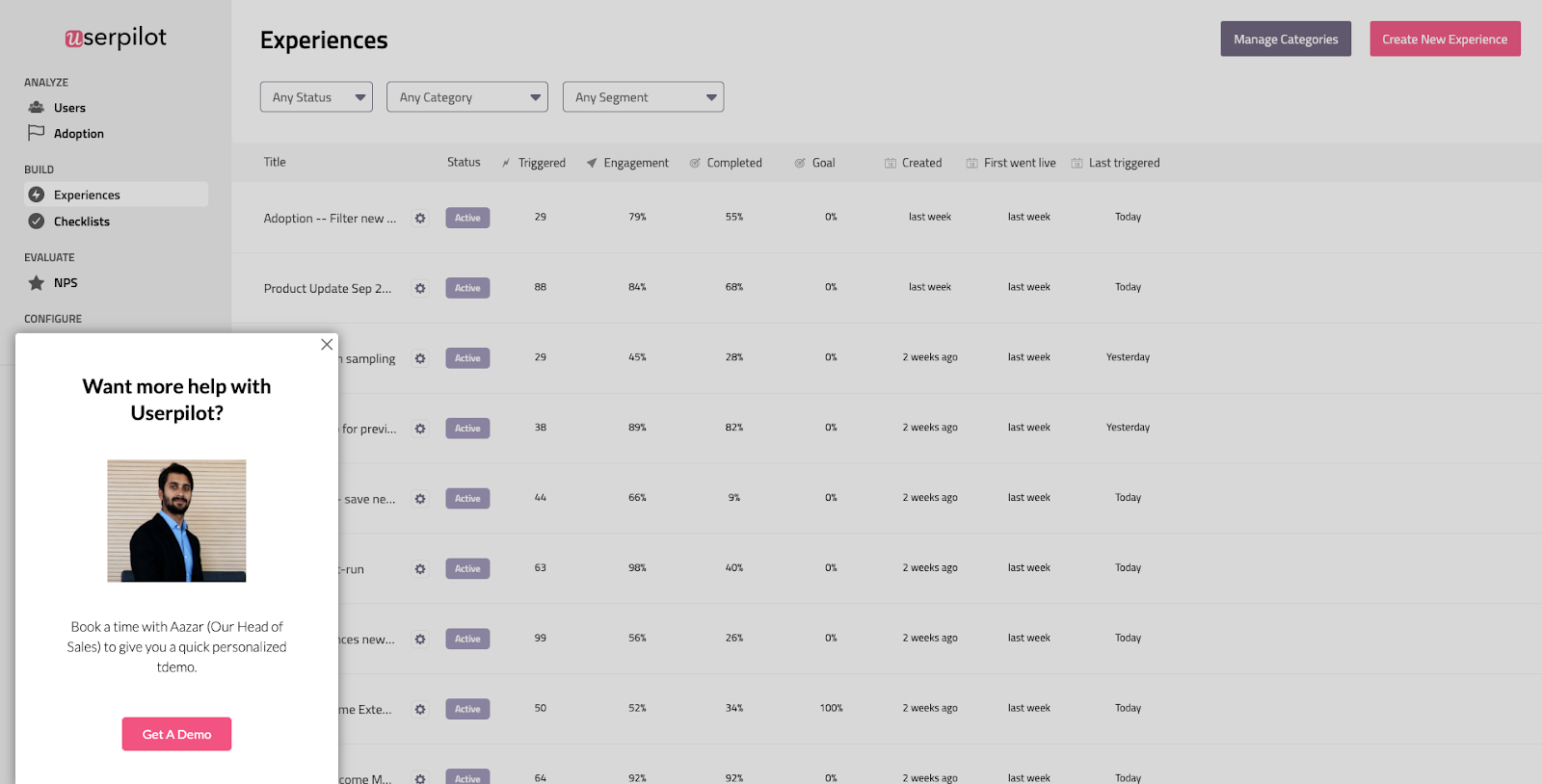
4. Show the value as soon as possible in the first run
A first run is the moment when trial users “walk through your product” for the first time. It’s the period of a couple of minutes after they signed up.
User attention is pretty low. A lot of things can distract us and make us see the value too late. If this is the case, then your trial-to-paid conversions will be pretty low.
That’s the reason why we need to show value to our users as soon as possible.
The first step to do this is to reduce the friction inside your product.
So instead of the dozens of different UI elements, you should show only the most important ones that are crucial for the users in the first-run.
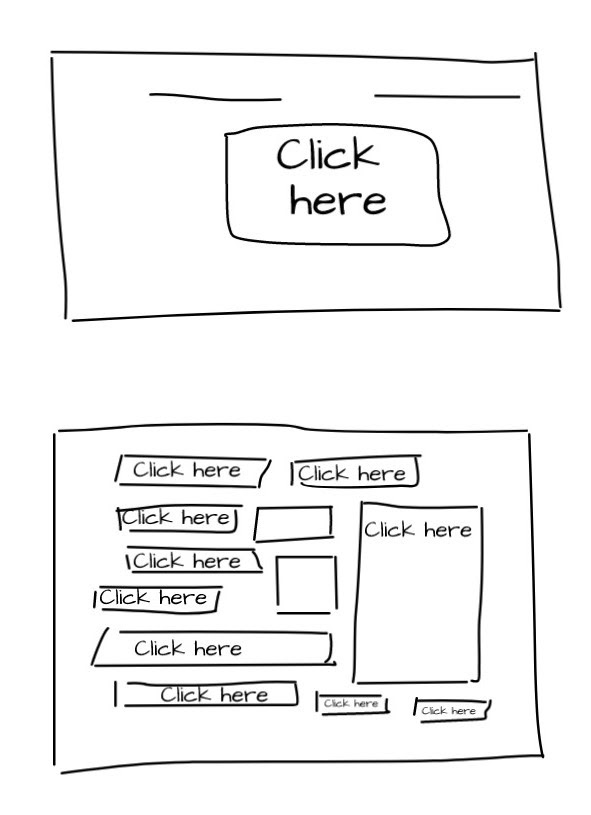
Try to reduce the number of steps users need to do before seeing the value.
For example, if you have a product that requires extensive setup, try to reduce the number of features you want to show at the beginning.
If your product is integration-based, then make your users integrate one or two most important things in the first-run that can have a direct impact on their business.
The sooner your trial users see the value of your product, the more motivated they will be to move forward.
5. Re-engage with those who are not qualified
It’s important to re-engage with those who are not qualified (yet). People sometimes just need follow-ups.
If they didn’t activate certain events inside your product, it doesn’t need to mean that they’re not interested in it.
Life happens. There can be different reasons why they stopped using your product after some time or immediately after signing up. Perhaps they were distracted so they forgot.
People like those need additional motivation. That’s the reason why it is important to touch base with them.
For example, at Userpilot, we’re sending this email to the users who are not engaged enough with our product:

It’s important to keep in mind that boring and dull emails and user onboarding won’t have any impact. That’s the reason why you need to implement a human element and personalization in it (if you want to achieve the highest ROI from PLG sales as possible).
You can also offer a discount to those who didn’t purchase a premium plan after the trial.
6. Don’t forget about in-app marketing
In-app marketing plays an important role in PLG sales and user adoption.
There are various things and spaces in your product you can use to market your new features or product changes that can make your trial users addicted to your product, improve your retention and reduce churn.
For example, Drift uses the empty space on their “sign-up” page to market their important features:
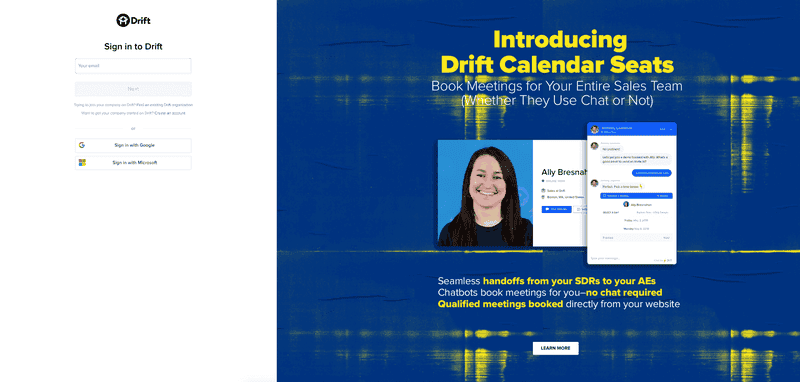
I love how Drift show social proof & human element on their signup page and in-app.
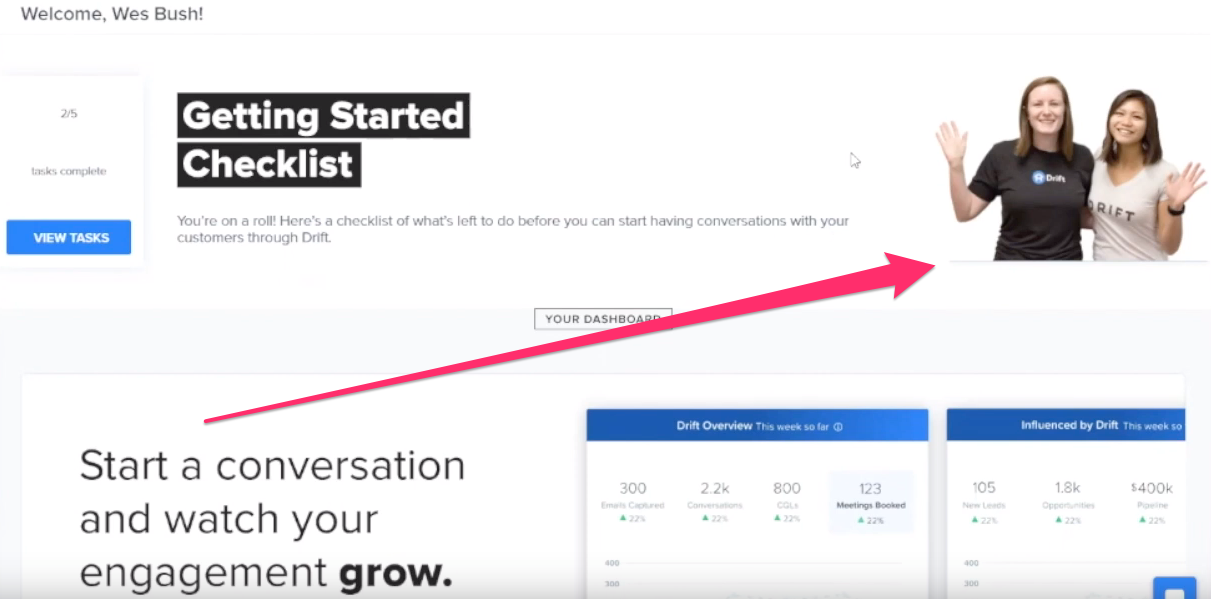
You can do your in-app marketing with progress bars, checklists, different UI elements (such as tooltips, modals, slide-outs) or even with your changelog — as Slack does:
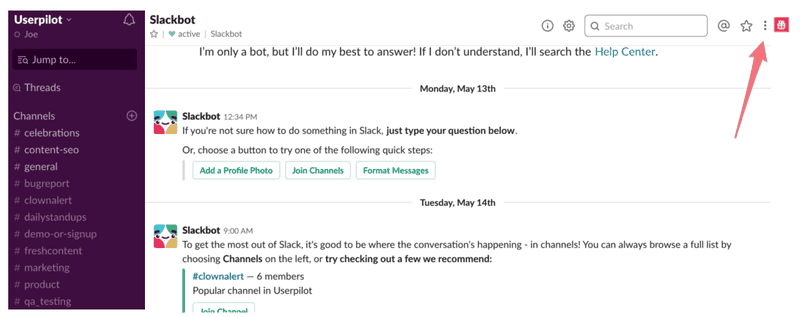
Watch your trial-to-paid conversions grow
As we could see, the purpose of PLG sales is to convert your trial users to paid ones automatically and on a scalable way through your product.
Because of that, understanding their in-app behaviours and monitoring their steps through your product is crucial for delivering the right user experiences and sending the most appropriate sales messages.
If you carefully implement everything we talked about above, you will probably be able to double your trial-to-paid conversions just like we did after we implemented the free trial process.
About the Author

Aazar Ali Shad is the VP of Growth & Sales at Userpilot, and has more than 5 years of SaaS experience. He is currently helping 500+ SaaS companies improve user onboarding and increase product adoption.
